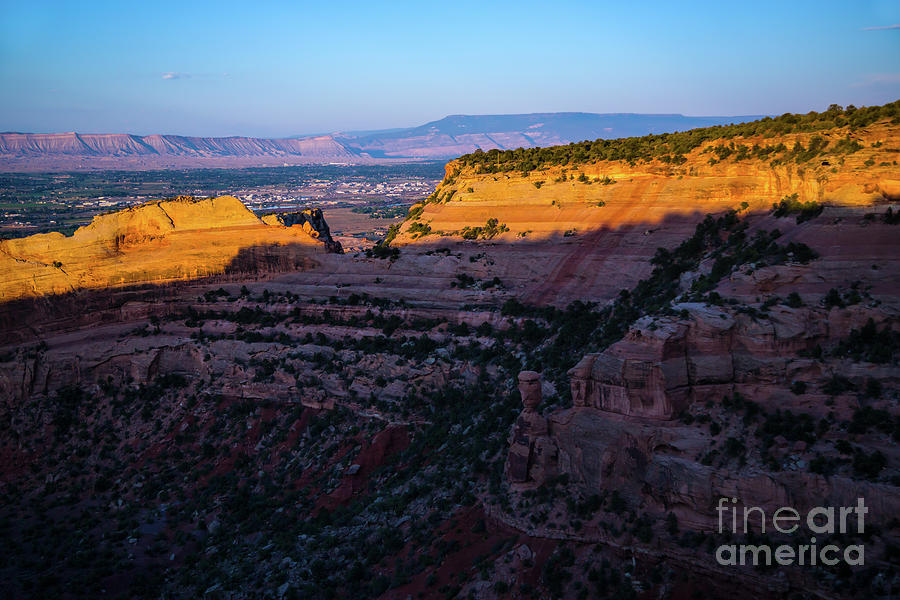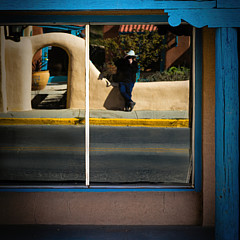
Rimrock Sundown

by Jon Burch Photography
Title
Rimrock Sundown
Artist
Jon Burch Photography
Medium
Photograph - Digital Capture/faa Watermark Will Not Appear On Your Finished Photograph.
Description
With the Book Cliffs and the Colorado town of Fruita behind, the sun sets on the rimrock in Colorado National Monument. Balanced rock is at the bottom of the canyon in shadow.
The dramatic scenery at the Monument, including the vertical cliffs and monoliths are composed of the Triassic Wingate Sandstone which is overlain by the resistant, silica-cemented Kayenta Formation. These units are part of the Glen Canyon Group which consists of the Wingate Sandstone, Kayenta Formation and Navajo Sandstone. The Navajo Sandstone and upper part of the Kayenta Formation were eroded away from this area.
Colorado National Monument is a part of the National Park Service near the city of Grand Junction. Spectacular canyons cut deep into sandstone and even granite-gneiss-schist rock formations, in some areas, this is an area of desert land high on the Colorado Plateau, with pinion and juniper forests on the plateau. The park hosts a wide range of wildlife, including red-tailed hawks and golden eagles, ravens, jays, desert bighorn sheep, and coyotes. Activities include hiking, horseback riding, road bicycling, and scenic drives; a visitor center on the west side contains a natural history museum and gift shop. There are magnificent views from trails and the Rim Rock Drive, which winds along the plateau. Nearby are the Book Cliffs, and the largest flat-topped mountain in the world, the Grand Mesa.
Its feature attraction is Monument Canyon, which runs the width of the park, and includes rock formations such as Independence Monument, the Kissing Couple, and Coke Ovens. The monument includes 20,500 acres, much of which has been recommended to Congress for designation as wilderness.
The area was first explored by John Otto, a free spirit who settled in Grand Junction in the early 20th century. Prior to Otto's arrival, many area residents believed the canyons to be inaccessible to humans. Otto began building trails on the plateau and into the canyons. As word spread about his work, the Chamber of Commerce of Grand Junction sent a delegation to investigate. The delegation returned praising both Otto's work and the scenic beauty of the wilderness area, and the local newspaper began lobbying to make it a National Park.
The area was established as Colorado National Monument on May 24, 1911. Otto was hired as the first park ranger, drawing a salary of $1 per month. For the next 16 years, he continued building and maintaining trails while living in a tent in the park.
The park became better known in the 1980s partly due to its inclusion as a stage of the major international bicycle race, the Coors Classic. The race through the park became known as "The Tour of the Moon", due to the spectacular landscapes the race passed through on Rim Rock Drive.
image copyright 2013 Jon Burch Photography
Uploaded
July 29th, 2013
Statistics
Viewed 633 Times - Last Visitor from New York, NY on 04/13/2024 at 2:02 PM
Embed
Share
Sales Sheet


























































